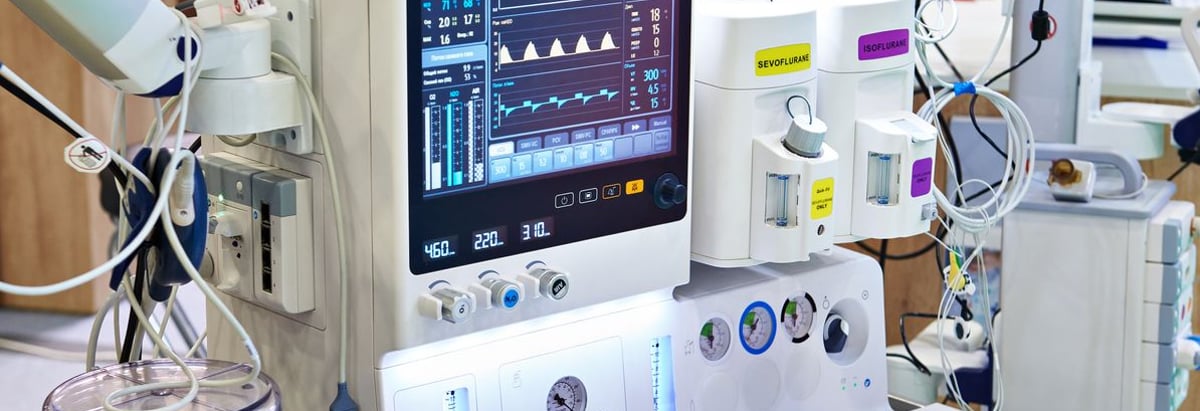- United Kingdom
- /
- Medical Equipment
- /
- LSE:SN.
Capital Allocation Trends At Smith & Nephew (LON:SN.) Aren't Ideal

What trends should we look for it we want to identify stocks that can multiply in value over the long term? Typically, we'll want to notice a trend of growing return on capital employed (ROCE) and alongside that, an expanding base of capital employed. Put simply, these types of businesses are compounding machines, meaning they are continually reinvesting their earnings at ever-higher rates of return. Having said that, from a first glance at Smith & Nephew (LON:SN.) we aren't jumping out of our chairs at how returns are trending, but let's have a deeper look.
What Is Return On Capital Employed (ROCE)?
For those who don't know, ROCE is a measure of a company's yearly pre-tax profit (its return), relative to the capital employed in the business. The formula for this calculation on Smith & Nephew is:
Return on Capital Employed = Earnings Before Interest and Tax (EBIT) ÷ (Total Assets - Current Liabilities)
0.086 = US$698m ÷ (US$9.8b - US$1.8b) (Based on the trailing twelve months to July 2023).
Thus, Smith & Nephew has an ROCE of 8.6%. On its own that's a low return on capital but it's in line with the industry's average returns of 8.7%.
Check out our latest analysis for Smith & Nephew

Above you can see how the current ROCE for Smith & Nephew compares to its prior returns on capital, but there's only so much you can tell from the past. If you'd like, you can check out the forecasts from the analysts covering Smith & Nephew for free.
How Are Returns Trending?
On the surface, the trend of ROCE at Smith & Nephew doesn't inspire confidence. To be more specific, ROCE has fallen from 13% over the last five years. However it looks like Smith & Nephew might be reinvesting for long term growth because while capital employed has increased, the company's sales haven't changed much in the last 12 months. It's worth keeping an eye on the company's earnings from here on to see if these investments do end up contributing to the bottom line.
What We Can Learn From Smith & Nephew's ROCE
Bringing it all together, while we're somewhat encouraged by Smith & Nephew's reinvestment in its own business, we're aware that returns are shrinking. And investors appear hesitant that the trends will pick up because the stock has fallen 11% in the last five years. On the whole, we aren't too inspired by the underlying trends and we think there may be better chances of finding a multi-bagger elsewhere.
One final note, you should learn about the 4 warning signs we've spotted with Smith & Nephew (including 2 which can't be ignored) .
While Smith & Nephew isn't earning the highest return, check out this free list of companies that are earning high returns on equity with solid balance sheets.
New: Manage All Your Stock Portfolios in One Place
We've created the ultimate portfolio companion for stock investors, and it's free.
• Connect an unlimited number of Portfolios and see your total in one currency
• Be alerted to new Warning Signs or Risks via email or mobile
• Track the Fair Value of your stocks
Have feedback on this article? Concerned about the content? Get in touch with us directly. Alternatively, email editorial-team (at) simplywallst.com.
This article by Simply Wall St is general in nature. We provide commentary based on historical data and analyst forecasts only using an unbiased methodology and our articles are not intended to be financial advice. It does not constitute a recommendation to buy or sell any stock, and does not take account of your objectives, or your financial situation. We aim to bring you long-term focused analysis driven by fundamental data. Note that our analysis may not factor in the latest price-sensitive company announcements or qualitative material. Simply Wall St has no position in any stocks mentioned.
About LSE:SN.
Smith & Nephew
Develops, manufactures, markets, and sells medical devices and services in the United Kingdom and internationally.
Good value with reasonable growth potential.
Similar Companies
Market Insights
Community Narratives




